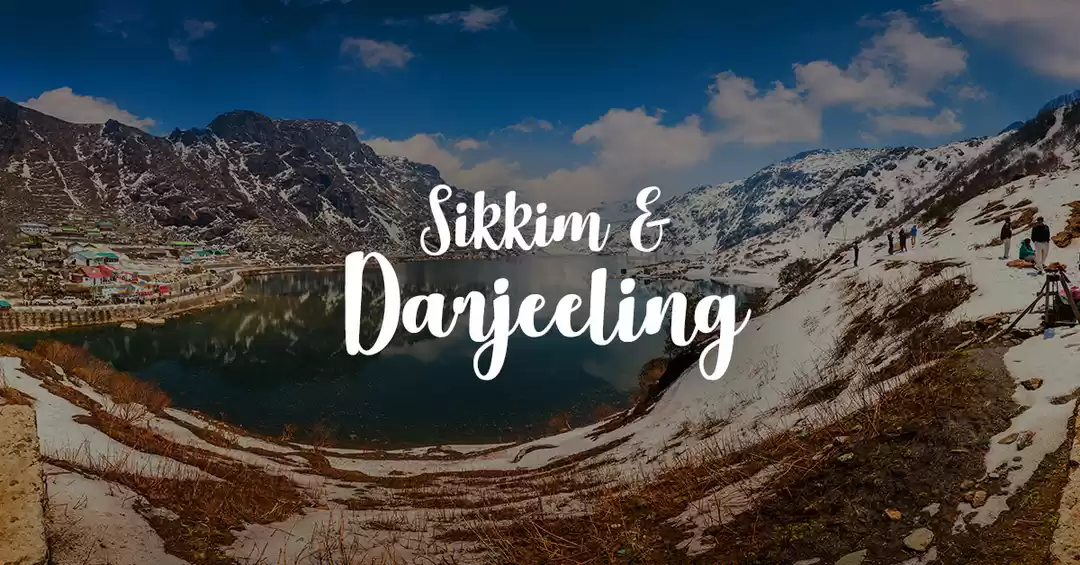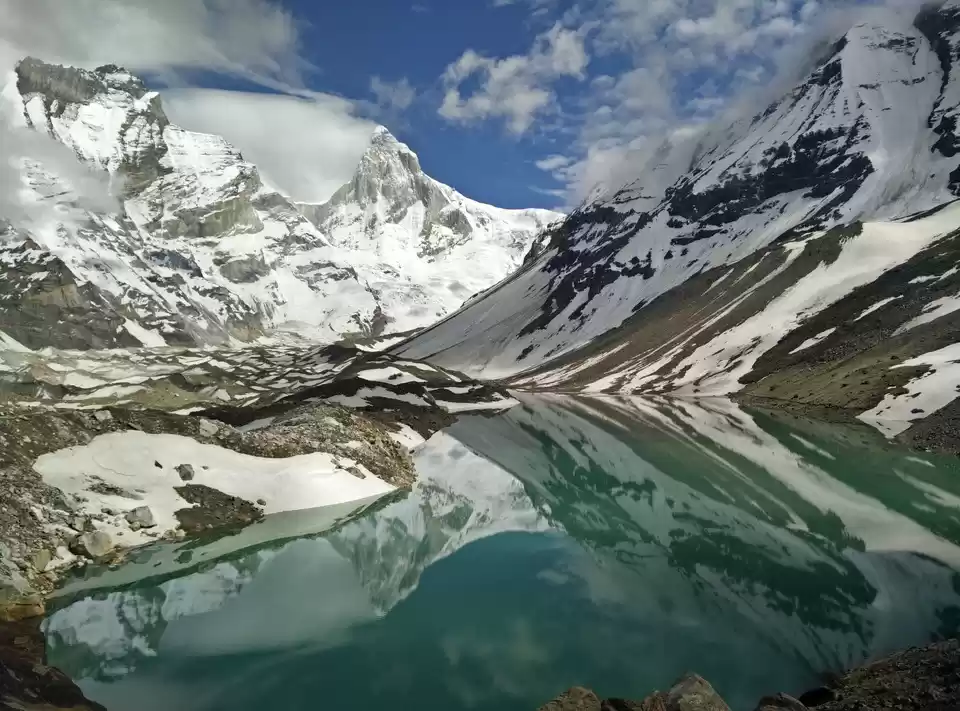
Mountaineering and hiking enthusiasts know that the amount of time and preparation that goes into scaling the height of a mountain such as the Everest or Annapurna is tremendous. This is where the importance of "base camps" comes in. These small encampments, usually set up at the base of the mountain, are your lifeline for the upcoming days of the trek. The fun part, however, is that getting to these base camps is probably just as challenging as reaching the summit, especially in the Himalayas. And preparing and trekking to the base camps can give you a fair idea of what the journey forward will look like, in addition to acclimatising your body for the adverse conditions.
If you're planning a trek anytime soon, here's a list of some of the most sought-after base camp treks in India and Nepal.
1. Annapurna Base Camp Trek
One of the most popular treks in the Himalayan region and also across the world, the Annapurna Base Camp is an incredible one for many reasons. First and foremost, it gives trekkers a chance to be in the proximity of peaks with altitude over 8,000 metres while being moderately difficult to traverse. Secondly, it combines a number of different landscapes – terraced rice paddies, rhododendron forests, and snowcapped glaciers – in one trip. The setting of the Annapurna Base Camp at 4130 metres itself is quite spectacular, as it is surrounded by four different peaks – Annapurna I (8091 metres), Annapurna South (7219 metres), Machapuchhre (6993 metres) and Hiunchuli (6441 metres). The trek has several starting points.
Area: Annapurna Mountain Range, Nepal
Starting point: Several (check with your organisers before leaving)
Altitude: 4,1300 metres
Difficulty: Intermediate
Duration: 7 to 12 days
Best season: March–May and Mid-September–October
2. Everest Base Camp Trek
Mount Everest has captivated the interest of adventurers for almost a century now. Many have even sacrificed their lives in order to reach the summit. In recent years, trekking to the peak's base camp has become more accessible. That, however, doesn't make it any less challenging. In fact, it still remains one of the most challenging treks in the world. And a beautiful mix of natural beauty, fascinating Sherpa culture, and warm Nepalese hospitality also make this trek one of the most unforgettable.
The trek begins and ends at Lukla, covering various villages and local settlements along the way where you can camp during the expedition.
Area: Mahalangur Himal sub-range, Nepal/Tibet
Starting point: Lukla
Altitude: 5,547 metres
Difficulty: Advanced
Duration: 14 days
Best season: March–May and September–December
3. Manaslu Base Camp Trek
Opened for trekking only after 1992, the Manaslu Basecamp Trek has become one of the most popular circuit for trekkers in the Nepal Himalayas. It offers plenty of opportunities for intermediate to advanced trekkers. The standard trek is around 18-19 days long and generally begins from Gorkha.
One important thing to keep in mind though is that it is a restricted route and requires travellers to obtain a permit from a government-registered trekking agency in Nepal to get entrance into the region.
Area: Mansiri Himal, Nepal Himalayas
Starting point: Gorkha
Altitude: 5,135 metres
Difficulty: Intermediate
Duration: 19 days
Best season: February–May and October–December
4. Kanchenjunga Base Camp Trek

At an altitude of 8,586 metres, Kanchenjunga is the world's third highest peak. It lies partly in the neighbouring country of Nepal and partly in the northeastern state of Sikkim. In India, the beauty of the majestic peak can be viewed via a trek to the base camp in Chaurikhang and Rathong Glacier, situated an altitude of approximately 4,500 metres. The trail starts from Yuksom in Sikkim and goes through Bakkhim, Phedang, Dzongri La, Bikhbari, and then finally to the base camp. The way back follows the same route. The beauty of this trek is that it offers gorgeous opportunities for camping along the way and once at the base camp, you also get to view four different massifs, including Frey's peak, Kabur, Koktang and Rathong, in addition to the Kanchenjunga.
Area: Sikkim Himalayas
Starting point: Yuksom, Sikkim
Altitude: 4,500 metres (approx)
Difficulty: Intermediate
Duration: 11 days
Best season: Mid-March–June and Mid-September–Mid-November
5. Nanda Devi East Base Camp Trek
With the Rishi Ganga Valley to its west and the Gori Ganga Valley to its east, Nanda Devi stands tall as the second highest peak in India and the highest in Uttarakhand at an elevation of 7,816 metres. It is actually a two-peaked massif standing in the centre of a ring of peaks. After the closure of the Nanda Devi Inner Sanctuary region, the base camp became the sole way for trekkers and mountaineers to witness the majestic mountain up close.
The route to the base camp passes through the Milam Valley and leads to an altitude of approximately 4,200 metres. Being one of the most difficult treks in the Indian Himalayan region, the journey requires acclimatisation at several bases. The trek starts off at Munsiyari, and passes through Lilam, Bugdiar, Gori Ganga village, Martoli, Milam village, Milam Glacier, and Lwani before finally ending at the Nanda Devi East Basecamp.
Area: Kumaon Himalayas, Uttarakhand
Starting point: Munsiyari, Uttarakhand
Altitude: 4150 metres
Difficulty: Advanced
Duration: 12-18 days
Best season: April–June and September–October
6. Friendship Peak Base Camp Trek
Situated in Beas Kund area of Pir Panjal range, the Friendship Peak is one of the most popular summits for trekking in the Indian Himalayan region. Looming at an altitude of 5,289 metres, it is an ideal peak for those with limited mountaineering experience. The trek, which begins at Solang Valley, offers spectacular views of the Pir Panjal and Dhauladhar ranges. While the base camp is located at an altitude of around 4,000 metres, trekkers usually prefer to go all the way to the summit, which, given the nature of the trek, is quite accessible even by beginners.
Area: Pir Panjal Range, Himachal Pradesh
Starting point: Solang Valley
Altitude: 5,289 metres
Difficulty: Beginner/Intermediate
Duration: 7-10 days
Best season: May–June and September–October
7. Stok Kangri Base Camp Trek
At an altitude of 6,153 metres, Stok Kangri is the highest trekkable summit in the Ladakh region in India. Needless to say that reaching the top is no easy feat, but trekking to the base camp, which is located at 4,950 metres, is not a cakewalk either like many novice travellers believe. Most travellers who set out to reach the summit, in fact, are only able to make it half-way through. The base camp actually serves as one for four peaks – Suku Kangri, Golep Kangri, Pyramid Peak, Pracha Kangri. If you do plan to trek to the summit, however, keep in mind that acclimatisation is extremely important. Spend a few days at the base camp, getting your body used to the change before heading forward.
Area: Stok Range, Ladakh
Starting point: Zingchen, Ladakh
Altitude: 4,950 metres
Difficulty: Intermediate/Advanced
Duration: 5-7 days
Best season: July–September
8. Kang Yatse Base Camp Trek
Another gem in the Ladakh region, Kang Yatse is located at an altitude of 6,250 metres. Neighbouring the Stok Kangri, it is often preferred by adventure enthusiasts who want to climb their first 6000-er but want to avoid the crowd. This trek is a haven for nature enthusiasts as it begins along the banks of the Markha river and offers views of diverse flora and fauna.
Again as is the case with Stok Kangri, the Kang Yatse trek isn't to be mistaken for an easy one. Experienced travellers advise that novices should attempt to reach the summit in a couple of tries instead of just going for it on their first attempt. And till you make it to the top, the base camp, located at an altitude of 5,150 metres is the perfect substitute.
Area: Markha Valley, Ladakh
Starting point: Chilling, Ladakh
Altitude: 5,150 metres
Difficulty: Intermediate/Advanced
Duration: 6-8 days
Best season: July–September
9. Mt Kamet Base Camp Trek
Mt. Kamet is the second highest mountain in the Garhwal region of India, after Nanda Devi. It lies in the Chamoli District of Uttarakhand, close to the border with Tibet. A trek to the summit is challenging but manageable high-altitude trek with those with similar prior experience. It isn't one, however, for novices. While the trek to the base camp, situated at Vasudhara Tal (about 4,500 metres), takes just a few days, but from there to attempt to reach the summit can take as long as half a month. The trek commences and ends in the village of Malari in Uttarakhand which has been declared a World Heritage Site.
Area: Garhwal Himalayas, Uttarakhand
Starting point: Malari, Uttarakhand
Altitude: 4,500 metres approx
Difficulty: Advanced
Duration: 6-8 days
Best season: May-June and September-October
What has been the most adventurous trek you've undertaken? Share your experience with us in the comments or write about it on Tripoto and other travellers might just get new ideas on where to travel.
































